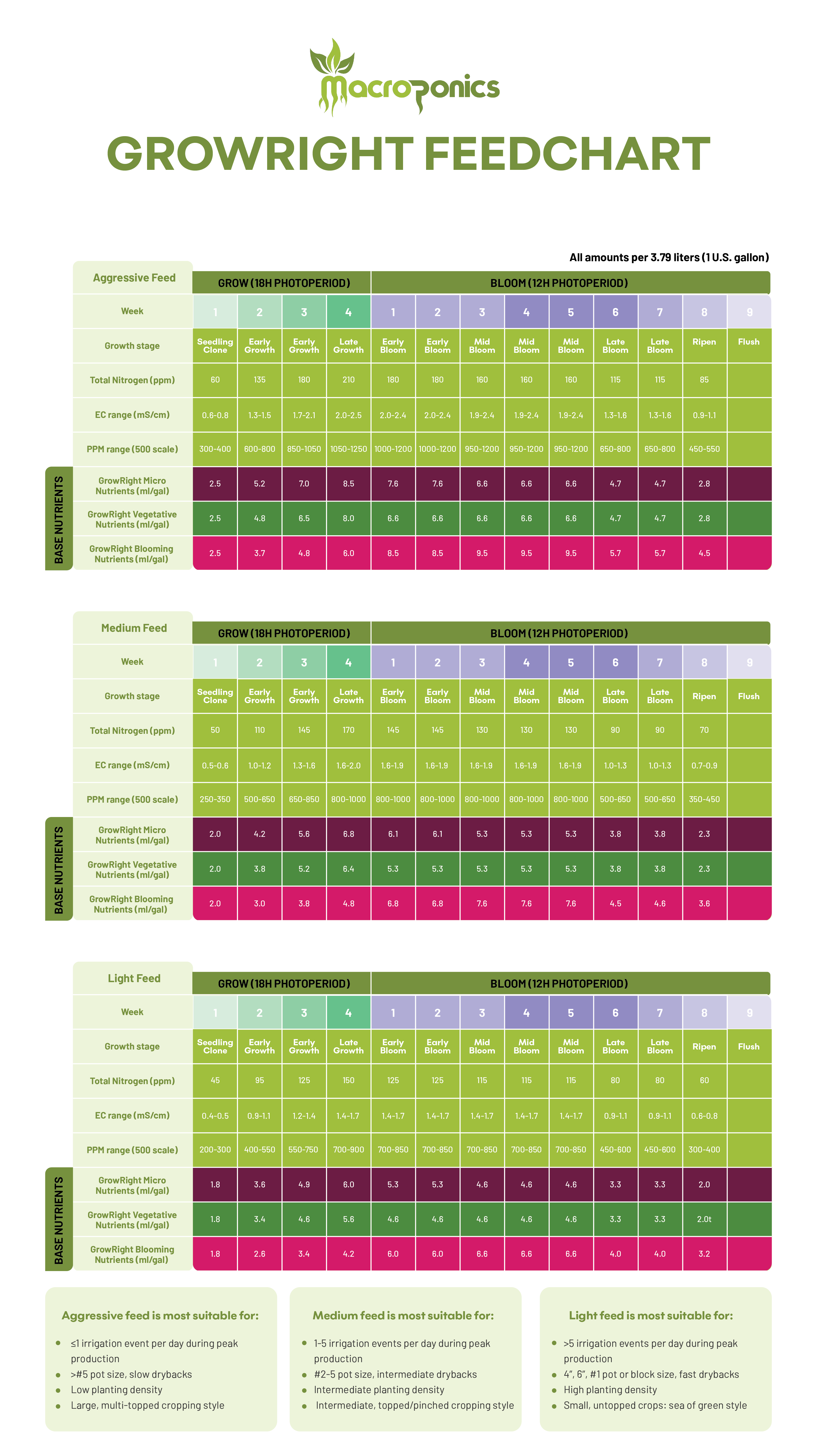Unlocking the Secrets of Electrical Conductivity in Hydroponic Systems
Welcome to our guide on Electrical Conductivity (EC) in hydroponics. Understanding EC is crucial for a thriving garden, as it ensures your plants receive the right balance of nutrients. Let's dive into what EC is, how it affects plant growth, and why it's essential for your hydroponic system.
The Challenge of Nutrient Management Through EC
Nutrient absorption is a critical factor in hydroponic gardening, yet maintaining the right nutrient levels can be complex. Incorrect nutrient concentrations can lead to deficiencies or toxicities, negatively impacting plant health and growth.Below is an example of a feeding schedule for plants. Using an EC probe can greatly simplify the process of following schedules like this one.
How Hydroponics Solves This Problem: Understanding EC
Electrical Conductivity (EC) measures how well a solution can transmit an electrical current, indicating the concentration of dissolved salts or nutrients in your hydroponic solution. Essentially, EC tells you how many nutrients are available for your plants, ensuring they receive the right amount for optimal growth.
The Complexity of Implementing EC Management
While understanding EC is crucial, measuring and maintaining optimal EC levels require precise tools and regular monitoring. The equipment needed ranges from basic pens for hobbyists to continuous monitors for professional setups, which provide real-time measurements but can be complex to use and maintain.
Why is EC Important?
-
Nutrient Absorption: Optimal EC levels ensure plants get the right amount of nutrients, promoting healthy growth.
-
Plant Health: Balanced EC prevents nutrient deficiencies and toxicities.
-
Water Quality: Monitoring EC helps maintain a nutrient-rich environment.
Measuring EC Levels
-
Basic Pens: Ideal for hobbyists.
-
Handheld Meters: More features, suitable for serious growers.
-
Benchtop Meters: High accuracy for professional setups.
-
Continuous Monitors: Real-time measurements for constant monitoring.
How to Measure EC
-
Collect a Sample: Take a sample of your nutrient solution.
-
Use an EC Meter: Test the sample with a calibrated EC meter
-
Interpret the Reading: Higher EC means more nutrients; adjust accordingly.
Optimal EC Levels
-
Leafy Greens: Lower EC (0.8 to 1.2 mS/cm).
-
Fruiting Plants: Higher EC (2.0 to 5.0 mS/cm).
Adjusting EC Levels
-
Dilution: If EC is too high, add pure water.
-
Increase Nutrients: If EC is too low, add more nutrients.
-
Monitor pH: Ensure pH remains balanced after adjustments.
Signs of Incorrect EC Levels
-
High EC: Burned leaf tips, stunted growth
-
Low EC: Yellowing leaves, poor growth.
Impact of EC on Nutrient Uptake
EC influences how well plants absorb nutrients. Proper EC levels support efficient nutrient uptake, while imbalances can lead to deficiencies or toxicities.
Managing EC Throughout Plant Growth Stages
-
Lower EC: Young plants need gentler nutrient concentrations.
Flowering/Fruiting Stage
Higher EC: Increased nutrient demands support flower and fruit development.
Essential Equipment for Managing EC
Best EC Meters and Monitors
-
Lower EC: Young plants need gentler nutrient concentrations.
-
Continuous Monitors: Provide real-time data
-
Smart EC Meters: Sync with apps for easy monitoring.
Maintenance Tips
-
Calibration: Regularly calibrate your meters.
-
Clean Probes: Keep probes clean and dry.
-
Battery Care: Replace or recharge batteries timely.
Automation and Smart Systems
Automation technology like the GrowRight system can adjust nutrient solutions in real-time based on EC readings, ensuring consistent and optimal growth conditions.
Conclusion
Mastering EC in hydroponics is essential for healthy plant growth. By understanding, measuring, and managing EC levels, you can ensure your hydroponic garden thrives. Embrace technology and regular monitoring to maintain the perfect nutrient balance for your plants. Happy gardening!

